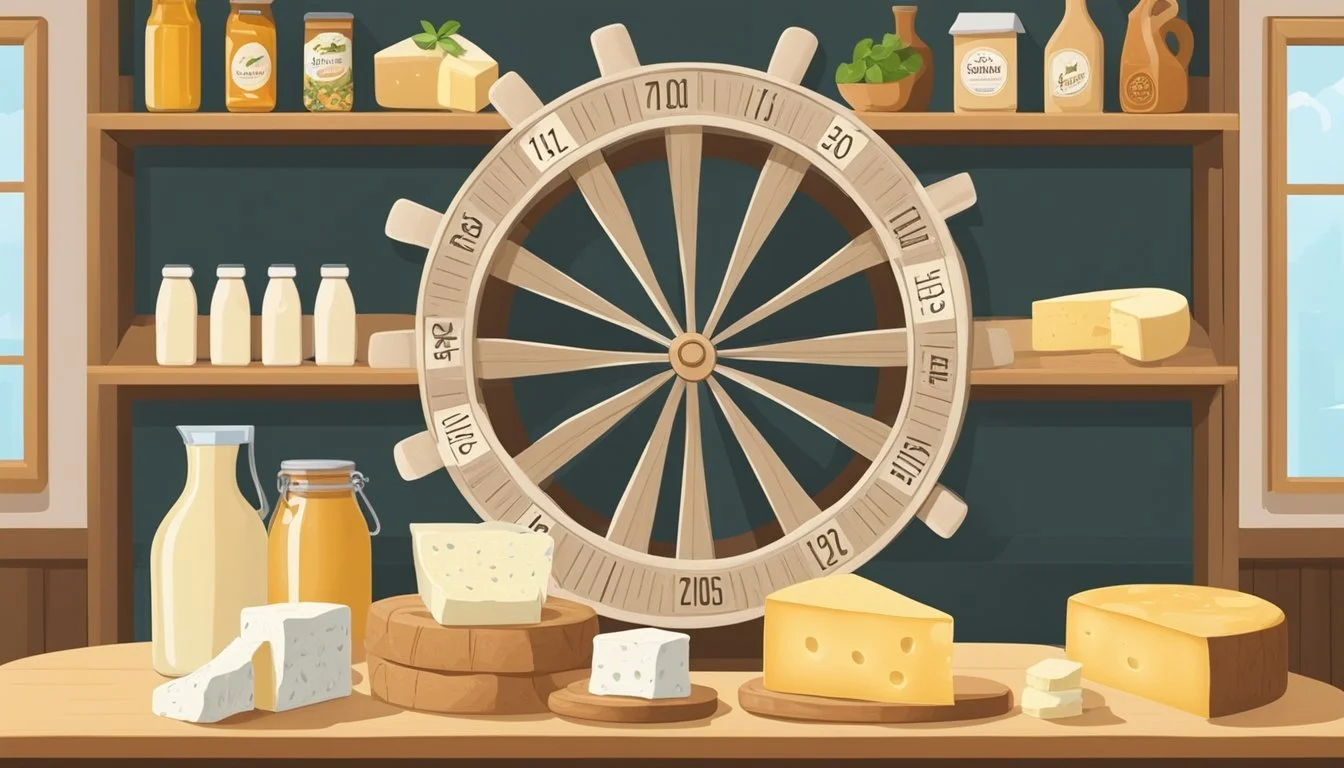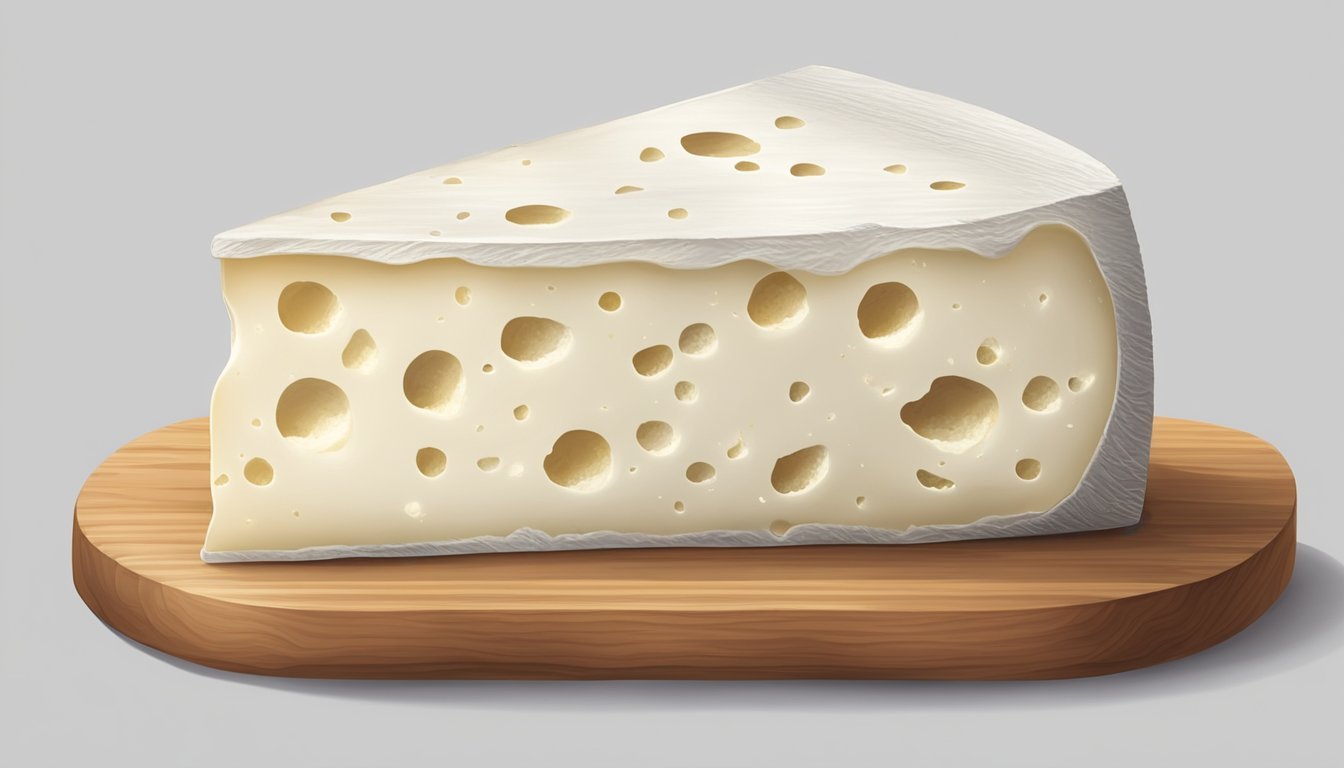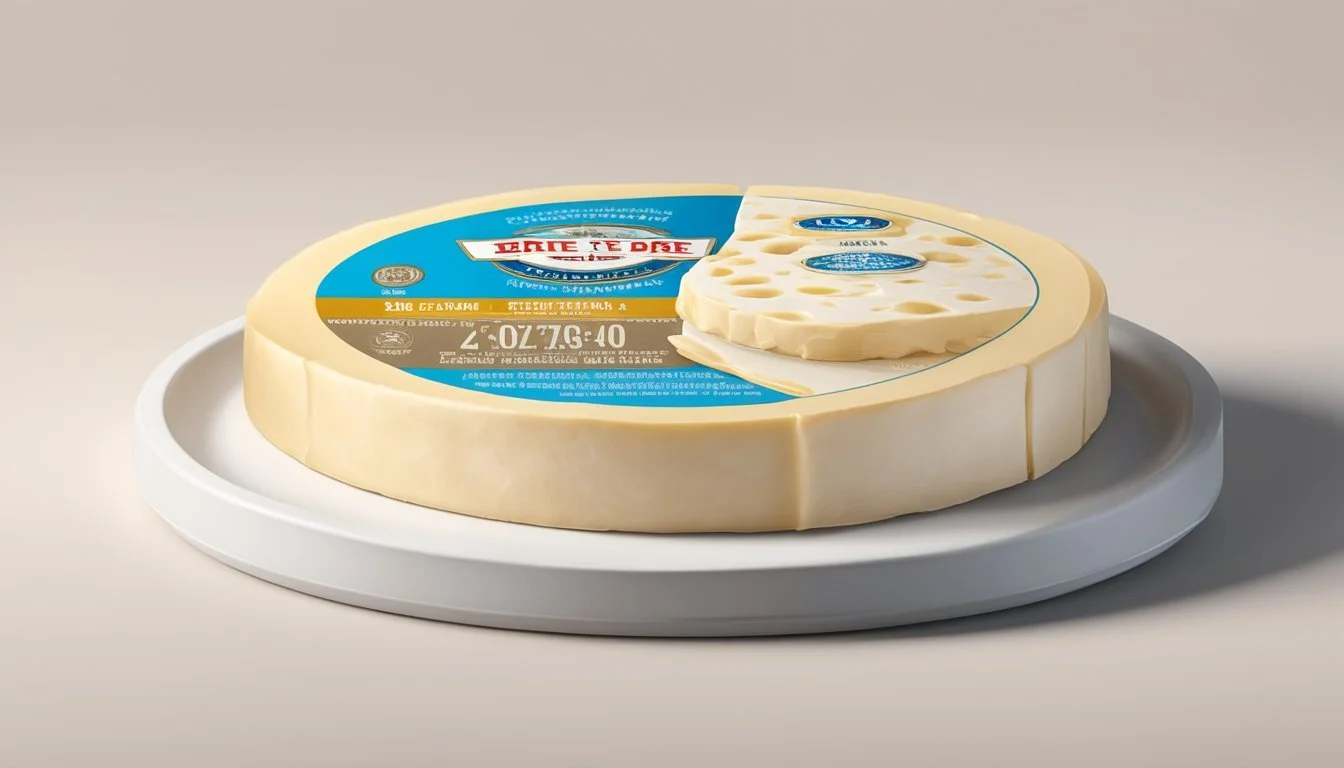How Long Does Brie Last?
Shelf Life and Storage Tips
Brie cheese, with its creamy texture and rich flavor, is a delicate delight enjoyed by many gourmets and casual cheese lovers alike. Understanding its shelf life is key to maintaining the quality of taste that brie is renowned for. Typically, when stored properly in a refrigerator at or below 40 degrees Fahrenheit, an unopened wheel of brie cheese can last for approximately one to two weeks past its printed expiration date.
Once opened, however, the shelf life of brie diminishes; it is advisable to consume it within one to two weeks to experience its optimal taste and texture. Brie is a soft cheese, a category more susceptible to spoilage than hard cheeses, so this window for consumption ensures that it is enjoyed in its prime. Indicators of the cheese going bad include a sour smell, a noticeable change in texture, or the presence of mold beyond the typical white rind, which signals that the cheese should not be consumed.
Understanding Brie Cheese
Brie originates from France and is esteemed as one of the most beloved varieties of soft cheese worldwide. It is characterized by its rich, creamy interior and edible white mold rind. This rind is a result of the cheese being surface-ripened with Penicillium candidum, a crucial agent that defines brie as a soft-ripened cheese.
A traditional brie is pale in color with a slight grayish tinge under a rind of white mold. The flavor profile of brie is mild and slightly earthy, and it becomes more pronounced as the cheese ages.
Composition and Texture:
Core: Brie’s center is soft and creamy.
Rind: Composed of a white mold, adding flavor and texture.
When considering the consumption of brie, these attributes are indicators of freshness and ripeness:
Texture: Should be consistent, with the cheese being more spreadable at peak ripeness.
Aroma: A ripe brie has a rich, earthy aroma without the overpowering scent of ammonia.
Experts in cheesemaking exercise precision—Brie matures between 6 to 8 weeks to develop the ideal balance of flavor and consistency. Keeping it at the peak of its maturity balance is paramount for both taste and safety.
Storage advice for brie emphasizes maintaining proper refrigeration and using appropriate wrapping materials, such as the original packaging, cheese paper, or wax paper, to preserve its quality. Consuming brie within two weeks of opening is recommended to enjoy it at its best. Brie, a representative of fine French gastronomy, calls for informed handling to ensure its distinctive sensory characteristics are savored.
Proper Storage of Brie Cheese
Storing brie correctly extends its freshness and flavor. Specific packaging methods and temperature controls are essential for optimal storage.
Refrigeration Essentials
For brie cheese, refrigeration is paramount to maintain quality and delay spoilage. It should be kept in the fridge, ideally in the cheese drawer where the temperature is more constant. The ideal temperature range for storing brie cheese is between 35-45°F (2-7°C). This helps preserve the cheese's delicate flavors and prevent the growth of unwanted mold.
Store brie in its original packaging when possible.
Once opened, wrap brie in cheese paper prioritizing materials that allow the cheese to breathe while maintaining moisture.
Freezing Brie Cheese
Freezing brie cheese is a contentious topic among cheese connoisseurs, but it is a viable option for longer storage. To freeze brie:
Slice the cheese and place slices on a baking tray lined with a silicone mat.
Freeze until solid and transfer to a freezer bag or an airtight container to prevent freezer burn.
To thaw, move the brie from the freezer to the refrigerator gradually.
Packaging and Wrapping
Proper packaging protects brie cheese's quality and extends its shelf life. The original packaging is best, but if it's not available, certain materials are more suitable for wrapping brie.
Cheese paper is preferred for its balance of humidity control and breathability.
If cheese paper is unavailable, parchment paper, then wrapped in plastic wrap or placed in an airtight wrap, can be used as an alternative to mimic this environment.
Avoid using plastics or aluminum foil directly on the cheese, as they can contribute to moisture buildup and spoilage.
Shelf Life and Expiration
Understanding the shelf life of Brie, as well as the indicators of freshness, ensures that consumers enjoy this soft cheese at its highest quality. Shelf life varies whether Brie is unopened or opened, but proper storage is a key factor in keeping it fresh.
Assessing Brie's Freshness
To assess Brie's freshness, one should:
Check the "best by" date on the package, as Brie is generally safe to consume up to one week past this date if it has been stored correctly.
Inspect the cheese for any mold that differs from the natural rind, a sign that the Brie might have gone bad.
Smell the cheese; an ammonia-like smell indicates that the Brie is no longer fresh and should be discarded.
Differentiating Between Unopened and Opened Brie
Unopened Brie:
Can generally last for about one to two weeks past its printed expiration date when refrigerated.
Moisture within the packaging can influence its shelf life—reduced moisture levels aid in the longevity of the cheese.
Opened Brie:
Should ideally be consumed within two weeks of opening to maintain optimal taste and quality.
Once opened and exposed to air, Brie should be stored in cheese paper or its original packaging to prolong freshness.
If properly refrigerated, opened Brie has a shorter shelf life due to increased exposure to moisture and environmental factors.
Factors Affecting Brie's Longevity
Temperature significantly impacts the shelf life of Brie cheese. It is recommended to store Brie at cool temperatures, ideally between 40°F (4°C) and 45°F (7°C). These conditions help to slow down bacterial growth and preserve the cheese's quality.
At room temperature, Brie should not be left out for more than two hours. The warmer environment accelerates bacteria activity, which can lead to spoilage and potential food safety risks.
Moisture content is another crucial factor. Brie's high moisture enables the characteristic creamy texture but also makes it more susceptible to bacterial growth. Thus, proper storage to maintain the right humidity is necessary.
The process of fermentation, which contributes to Brie's unique flavor, is affected by the storage conditions. If Brie is kept at an inappropriate temperature or humidity level, this can alter the fermentation process, impacting both texture change and flavor.
Suggested storage solutions for Brie include keeping it in its original packaging or wrapping it in cheese paper after opening. This approach helps to retain the moisture balance and prevents unwanted exposure to air that can introduce additional bacteria.
Consumers should regularly inspect Brie for any textural changes or off smells, which may indicate spoilage. It's essential to consume the cheese within two weeks of opening to ensure the best taste and safety.
Identifying Spoilage in Brie Cheese
When it comes to brie cheese, recognizing when it has gone bad is key to ensure both enjoyment and safety. Brie can display distinct spoilage signs both visually and through its taste and aroma.
Visual Spoilage Indicators
The visual signs of spoilage in brie cheese are often unmistakable. An edible brie features a pale white, powdery rind that is free from any odd-colored molds. Once spoilage begins, key indicators include:
Mold: Unusual mold colors like green, blue, or black are red flags. While the presence of white, powdery mold on the edges is normal, vibrant or dark molds indicate spoilage.
Texture: A fresh brie is supposed to have a creamy texture. If the cheese develops a slimy or sticky surface, or if it becomes excessively hard or chalky, it may be time to discard it.
Taste and Aroma Clues
Taste and aroma provide critical insights into the condition of brie cheese. The following points help to identify spoilage:
Flavor: Brie should taste mild and slightly earthy. A sharp or sour flavor can indicate that the cheese is overripe or spoiled.
Smell: A healthy brie emits a subtle, earthy aroma. If the cheese exudes an intense ammonia smell or an off-putting odor, it should not be consumed as it can cause food poisoning.
Serving and Culinary Uses of Brie
Brie, with its creamy texture and mild flavor, is a versatile cheese that enhances both cheese platters and cooked dishes.
Preparation for Cheese Platters
When including Brie on a cheese platter, it's best served at room temperature to accentuate its soft and spreadable properties. It pairs exceptionally with various crackers, providing a balance to their crispness. To ensure the Brie remains the star of the platter, they often include a variety of other cheeses like hard cheeses for contrast, without overshadowing the Brie’s subtle taste. Accompaniments may include fruits and nuts that compliment Brie's flavor without dominating it.
Recommended Pairings for Brie on Cheese Platters:
Crackers: Aim for mild, flaky varieties
Fruits: Grapes, figs, and pear slices
Nuts: Almonds and walnuts
Brie in Cooked Dishes
In cooked dishes, Brie offers a rich, creamy element. It is not as robust as blue cheese or feta, and it has a more subtle profile than cream cheese, making it ideal for baking into puff pastry or topping on pizzas where it melts beautifully. Brie pairs well in recipes with chicken, providing a smooth feel and a refined taste that doesn't overpower the other ingredients. It should be noted that Brie's rind is edible and adds texture and flavor to cooked recipes.
Examples of Brie in Cooked Recipes:
Baked Brie: Wrapped in puff pastry and often topped with fruit preserves
Brie-topped Pizza: Thin slices melt quickly and evenly for a gourmet touch
By paying attention to the pairing and cooking methods, one can fully enjoy the delicate taste and creamy texture of Brie in a variety of culinary applications.
Health and Safety Considerations
When dealing with brie and other soft cheeses like Camembert and cottage cheese (how long does cottage cheese last?), proper handling is essential to prevent food poisoning.
Storage: Soft cheeses should be refrigerated promptly, at temperatures below 40°F (4°C). Brie should be consumed within two weeks of opening, as harmful bacteria growth is more likely in soft, moist environments past this period.
Visual Inspection: One should discard brie showing signs of overripe such as unnatural mold not part of its original rind or if the cheese appears discolored.
Smell: An ammonia-like odor from brie is a red flag indicating spoilage.
Taste: A sharp or unpleasant taste is an indication that the cheese may be unsafe to consume.
Time at Room Temperature: Brie should not be left out for more than 2 hours to maintain food safety. Bacteria can grow rapidly at room temperature.
Consumption Post-Expiry Date: While the best before date is not an absolute expiry date, it's a safe practice to err on the side of caution and consume brie before this date.
Following these guidelines helps minimize the risk of bacterial contamination, including but not limited to pathogens like Salmonella, Listeria, and E. coli, known for causing foodborne illnesses. It is crucial to handle brie with care and attention to detail ensuring food safety.
Common Questions About Brie
When storing Brie cheese, individuals often inquire about the best practices to maintain its quality and freshness. Two frequently asked questions encompass its freezing possibilities and indicators of quality.
Can Brie Be Frozen?
Brie cheese can be frozen, although it is not recommended as freezing can alter its texture. When Brie is frozen, the water content within turns to ice, leading to a change in the structure of the cheese once thawed. To freeze Brie:
Wrap the cheese tightly in cling wrap or aluminum foil.
Place it inside a freezer bag or airtight container.
Label the container with the current date.
Thaw frozen Brie in the refrigerator for several hours before consumption to slightly mitigate texture changes. It is important to note that frozen Brie is best reserved for cooking as the creamy texture may become crumbly and less smooth, affecting the spreadability and the sensory experience of enjoying fresh Brie.
How to Determine Brie Quality
To assess the quality of Brie, one should use their senses to identify any spoilage or maturity markers. For an optimal analysis, consider the following:
Visual inspection: Brie should have a consistent white rind, known as the bloom. An unusual mold or discoloring could indicate spoilage.
Touch: The cheese should feel soft but not overly runny. Over-ripening can lead to an excessively soft texture.
Smell: A quality Brie has a rich, earthy aroma. A strong ammonia-like odor suggests the Brie is past its prime and should be discarded.
Taste: A well-matured Brie offers a delicate balance of buttery, salty, and slightly sweet flavors. If the taste is off, it's likely that the cheese has spoiled.
Regular refrigeration is essential for maintaining Brie's quality. A well-wrapped Brie can be stored in the refrigerator where it continues to mature and ripen. It's advisable to consume Brie within one to two weeks of opening to enjoy its full flavor profile.







